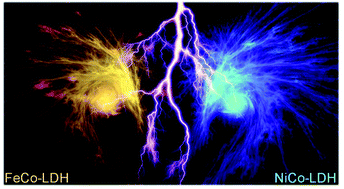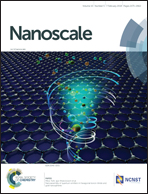Mechanically stable ternary heterogeneous electrodes for energy storage and conversion†
Abstract
Recently, solid asymmetric supercapacitor (ASC) has been deemed as an emerging portable power storage or backup device for harvesting natural resources. Here we rationally engineered a hierarchical, mechanically stable heterostructured FeCo@NiCo layered double hydroxide (LDH) with superior capacitive performance by a simple two-step electrodeposition route for energy storage and conversion. In situ scanning electron microscope (SEM) nanoindentation and electrochemical tests demonstrated the mechanical robustness and good conductivity of FeCo-LDH. This serves as a reliable backbone for supporting the NiCo-LDH nanosheets. When employed as the positive electrode in the solid ASC, the assembly presents high energy density of 36.6 W h kg−1 at a corresponding power density of 783 W kg−1 and durable cycling stability (87.3% after 5000 cycles) as well as robust mechanical stability without obvious capacitance fading when subjected to bending deformation. To demonstrate its promising capability for practical energy storage applications, the ASC has been employed as a portable energy source to power a commercially available digital watch, mini motor car, or household lamp bulb as well as an energy storage reservoir, coupled with a wind energy harvester to power patterned light-emitting diodes (LEDs).



 Please wait while we load your content...
Please wait while we load your content...